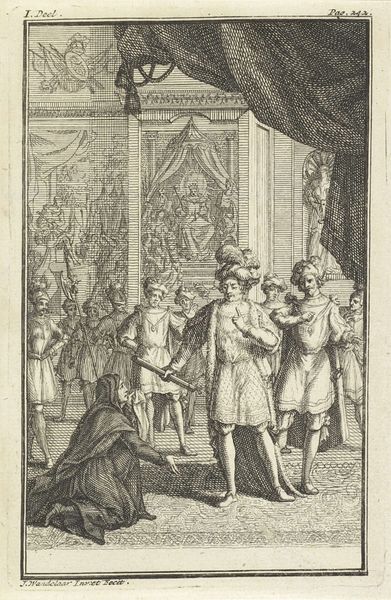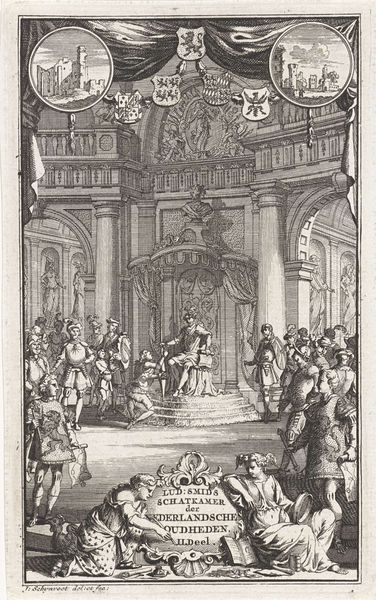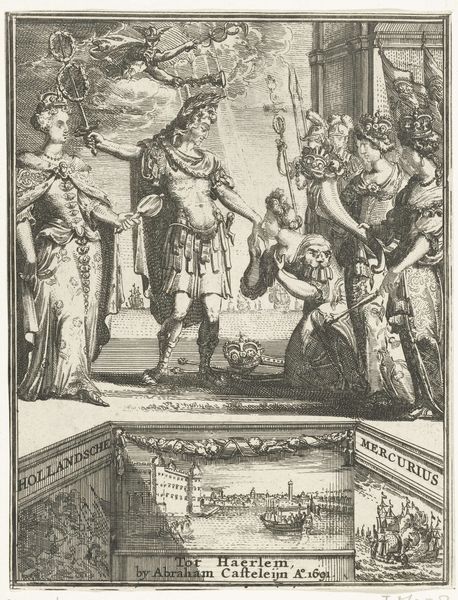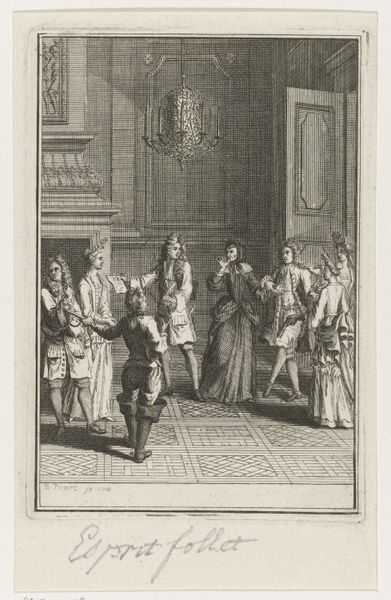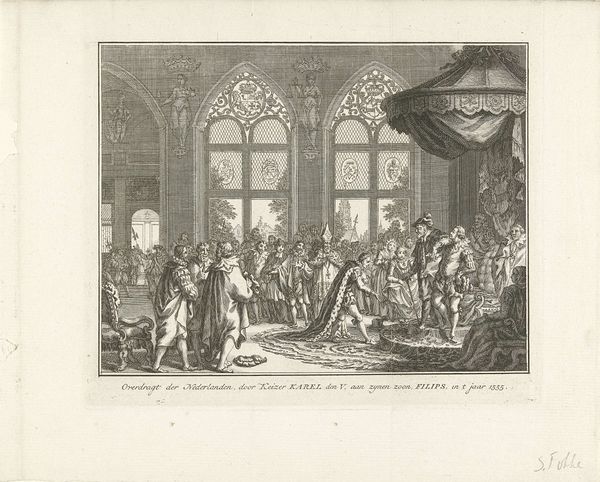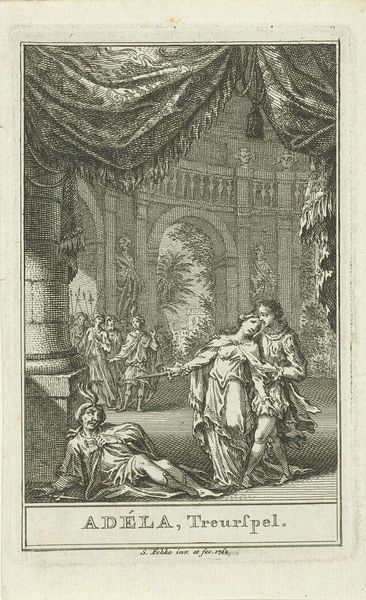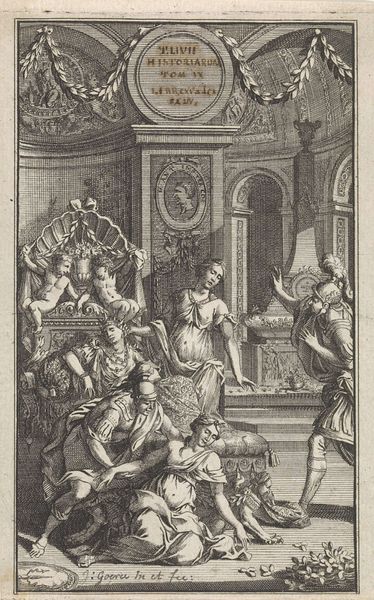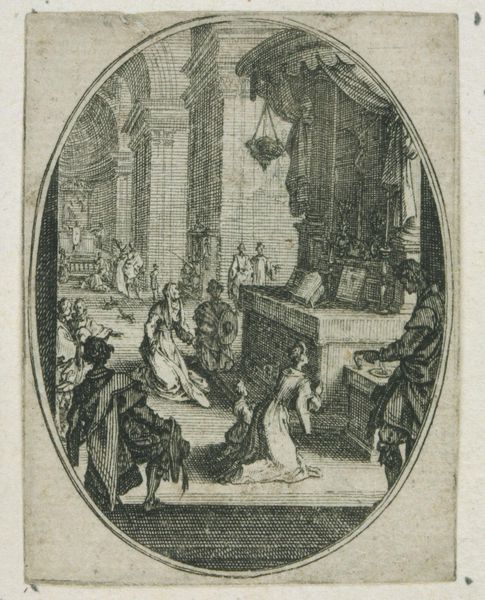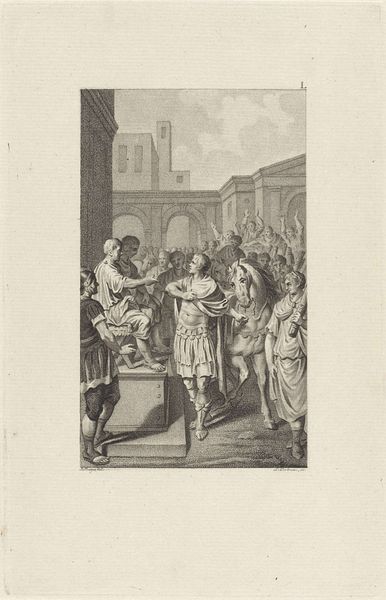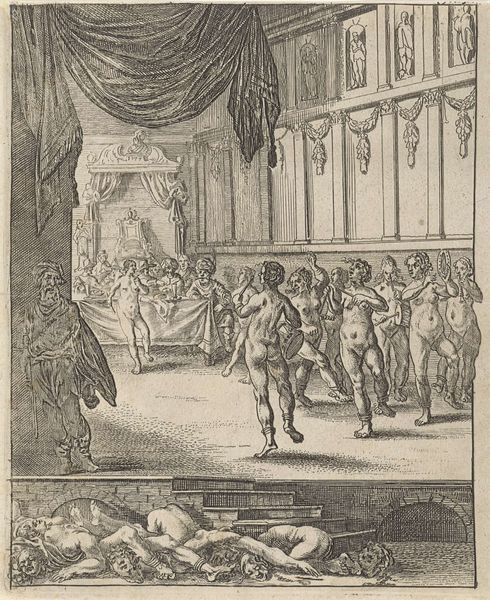
print, engraving
#
baroque
# print
#
old engraving style
#
classicism
#
cityscape
#
history-painting
#
engraving
Dimensions: height 133 mm, width 84 mm
Copyright: Rijks Museum: Open Domain
Curator: Let’s turn our attention to this detailed engraving by Bernard Picart, created in 1717, titled "Bijeenkomst van Romeinse heersers bij triomfboog" or "Gathering of Roman Rulers by a Triumphal Arch." It's currently housed right here at the Rijksmuseum. Editor: My first impression is one of high drama. The light and shadow create an incredible sense of depth. I mean, look at the fainting woman! It feels ripped from a stage play. Curator: Indeed. Picart masterfully blends classicism with baroque sensibilities. You have the imposing Roman architecture juxtaposed with these incredibly emotive figures. Note the triumphal arch – a potent symbol of power and victory, almost like a stage for political machinations. Editor: Right. And the arrangement, this perfectly balanced composition with the central arch... it's almost too perfect, isn’t it? Makes me wonder about the narrative being presented, whether it’s pure historical record or carefully constructed propaganda. I see some bodies over in the shadows under another arch... looks nefarious. Curator: Exactly! The engraving depicts a scene rife with intrigue, focusing on the political suspicion surrounding Coriolanus, son of Juba, and his supposed assassination ordered by Livia, wife of Emperor Augustus. The text at the bottom certainly points that way. Picart uses the architecture to frame the scene and emphasize the gravity of the events unfolding, with a whole lot of implied history shaping the room. Editor: So, it’s about more than just pretty architecture. Picart is diving headfirst into a viper's nest of Roman power struggles! It also strikes me that a black and white image almost enhances that dramatic feeling. Like there’s no color needed here, just stark good and evil. Curator: I completely agree. This engraving offered Picart the chance to really explore how these images communicated power and meaning in the early 18th century. He uses techniques he likely saw employed in Baroque era history painting, even as those aesthetic conventions were being revised and reformulated in a Classical mold. It’s a work that, through visual storytelling, invites us to unpack complex webs of power, conspiracy, and legacy. Editor: Makes you think about whose stories we choose to immortalize in art, doesn’t it? Curator: Absolutely. And how we choose to depict them, for that matter.
Comments
No comments
Be the first to comment and join the conversation on the ultimate creative platform.
